
UNITED STATESDIRECTORY OF NIGHTCLUBS |
||
| CALIFORNIA | FLORIDA | ILLINOIS |
| MICHIGAN | NEW JERSEY | NEW YORK |
| OHIO | PENNSYLVANIA | TEXAS |
| VIRGINIA | WASHINGTON | |

UNITED STATESDIRECTORY OF NIGHTCLUBS |
||
| CALIFORNIA | FLORIDA | ILLINOIS |
| MICHIGAN | NEW JERSEY | NEW YORK |
| OHIO | PENNSYLVANIA | TEXAS |
| VIRGINIA | WASHINGTON | |
We have had any number of Latin music artists of various nationalities in this section, but we are pleased to announce that, for the first time, we will tell the story of a Bolivian who brings pride to his flag with his great talent.
We are talking about Bolivian producer, composer and guitarist Gabriel Navia, with whom we were fortunate enough to talk by Zoom about the most important details of his fruitful career. In the following lines, some of the most important issues addressed in the conversation.
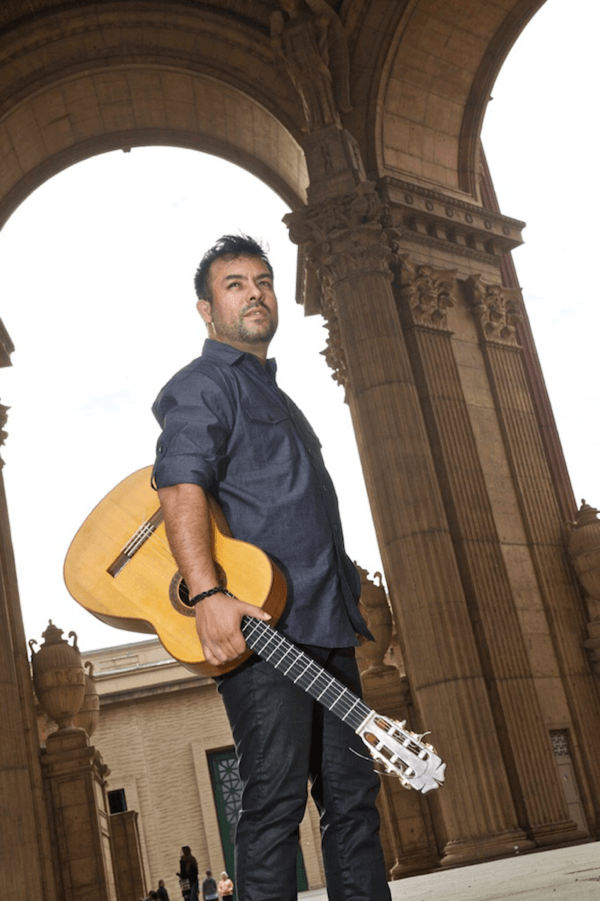
Gabriel tells us that the love he has always felt for music was instilled in him by his parents, especially his father, who was professionally dedicated to it to the point of having his own band. In the 70’s, Eddy Navia, Gabriel’s father, was in an iconic Bolivian band called Sal Y Andina that played instrumental music, much of which was composed by him at the time.
In his mother’s case, she had a great sense of rhythm and a beautiful voice, so she did her best to make her son learn as much as possible about the fundamentals of music and how to play various instruments. This shows that she was also a key piece in his training as an artist.
Gabriel also points out that, at home, he and his family listened to music of all kinds, but New York salsa was very important in the path the young man would later take.
When reading a little of Gabriel’s history, we found that he played with his father in the group Sukay, with which he experimented a lot with the charango that, as he explains, is a five-stringed instrument very similar to the banjo. It was the first instrument he played in his life and the one that would inspire him to play the guitar later on.
After his parents split, his father went to live in the United States and met his second wife, with whom he runs Sukay. That is when Gabriel began to visit the country and, soon after, he was playing in a theater for more than 2000 people. Then, he knew that this was what he wanted to devote the rest of his life to.

While it is true that the instrument for which Gabriel is best known today is the guitar, it is not the only one he is dedicated to.
The artist can be defined as a multi-instrumentalist, that is, someone who plays a considerable number of musical instruments with excellence such as piano, saxophone, quena and many others. ”I have always been curious to learn how to play new instruments and learn new things every day. That’s how I’ve managed to specialize in so many at the same time” Gabriel said about this.
He has become more dedicated to playing the guitar since, during his time with the group Sukay, he had to replace the guitarist who was not available at the time, which makes him feel a special affection for the instrument as he used it.
Not to mention that some of his instruments were robbed in his native Bolivia and one of the stolen objects was his charango. This event left him so depressed that he put the charango aside for years and devoted himself fully to the guitar, during which time he studied it in detail at a theoretical and practical level. He also began to listen to jazz and flamenco records in which the guitar is widely used, making him experiment with new styles. In this sense, an artist who inspired him a lot was Spanish guitarist Paco de Lucia.
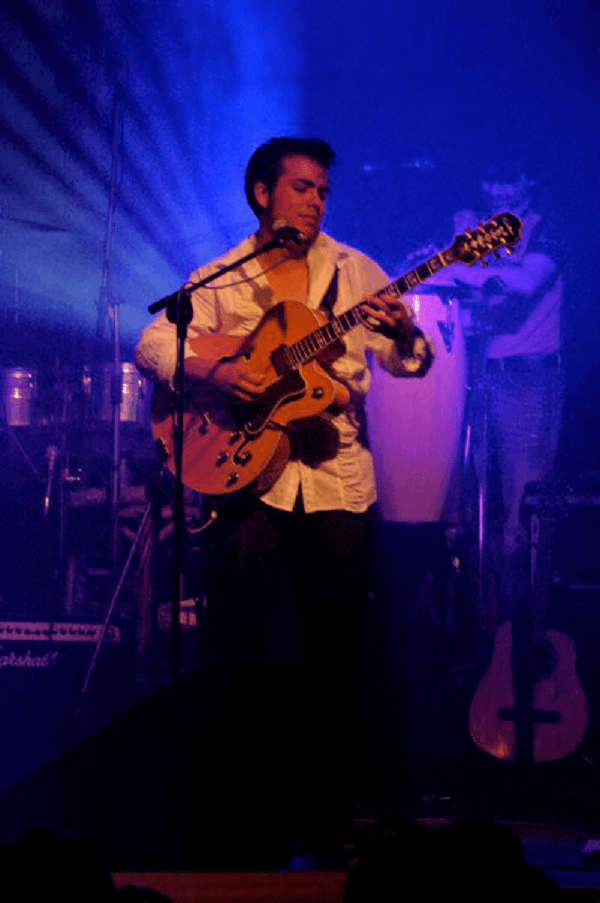
Gabriel has had the opportunity to study in several of the most important musical institutions in the world, which have been fundamental in the professional training of the artist.
The first thought that came into his head was the Instituto Eduardo Laredo in Cochabamba. He described it as an arts school that has a very traditional style during the mornings, while the afternoons its teachers focus on the musical part. It is here where Gabriel learned all about theory, solfege, harmony, scores and many other important details.
Some time later, in the United States, he entered the San Francisco Conservatory, where he studied with the famous classical guitarist Scott Tennant. In the same country, he won a scholarship to study some courses at Berklee College of Music.
In Barcelona, he also received a scholarship to study a master’s degree in flamenco at the Conservatori del Liceu thanks to Fundación Carolina, whose main beneficiaries are Latin American applicants without the resources to study there.
”I feel very fortunate to have been able to study in all these institutions which have been very important in my career, but I believe that a musician learns the most important things on stage. You can learn all the theory in the world, but if you haven’t had street experience and gone to practice, you will be an incomplete artist” Gabriel remarked on this subject.
”In fact, I believe that many of the most prodigious musicians in the world have not been trained in academies, but in the streets, because they have had to make themselves from the beginning. Academic education is important, but the main place where music is born is in the heart” he continued.
Gabriel had always worked as an independent artist, but there came a point in his career when he realized he needed something more to level up.
Given that the best way to do business in the United States is through registered companies and brands, Gabriel created his own music company which he named NAVIA PRODUCTIONS, LLC, so that his project could be identified with a legally registered entity and avoid any legal problems.
The company was basically created with the purpose of giving a legal basis to Gabriel’s work to stand on, but he still considers himself an artist as independent as the first day.
Read also: Exclusive with tres player Iván Camblor from the group Pellejo Seco
Many Latin Americans have left the name of their culture very high around the world, making people from other nationalities and even continents feel fascinated by these elements and end up adopting them as their own. Such is the case of Nigerian Oluwakemi Odusnya, better known as Kemi, who has been kind enough to share with us a little of her story, her knowledge of the Lucumi language and her relationship with Latin music.

Kemi tells us that she was born in Nigeria, but moved to the United States when she turned 18 in search of a better future for herself. That was more than 10 years ago, so the young woman already had a good idea of how things are handled in her country of residence.
Taking advantage that this is the land of opportunity, she studied computer science and graduated as a software engineer, the profession she is in now.
Additionally, she discovered other passions and hobbies such as Latin music and dancing, especially tango, but we will talk about that a little later on.
In his country of origin, he learned to speak English, which is the official language of Nigeria, and Lucumi, which we will talk about in the next section.
After talking a little bit about her personal life, Kemi went on to explain what the Lucumi language was and how it was perceived today. Contrary to what many online sources might say on the subject, the Nigerian explained that Lucumi and Yoruba were pretty much the same thing, but with a different name.
The group of people who spoke Locumi are no longer called that way because many Nigerians have moved to other countries, so there are other terms to define them today.
Kemi moved on by explaining that, in her country, there are about 300 languages in general, but the official one is English. This in order that the speakers of the other languages can communicate with each other without any problem. Among these native languages, we can mention the ”Pidgin English” which is the result of mixing English with elements from local languages.
In the specific place Kemi grew up, villagers speak Yoruba, which was formerly known as Lucumi. The name change of the language and many terms used in it have been the direct reault of the immigration of many Nigerians to other countries, especially to the West.
In Kemi’s particular case, she was pleasantly surprised to discover the lyrics of Celia Cruz and to find many of the words of her own Lucumi language.
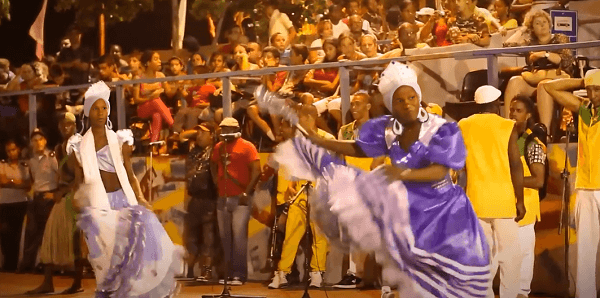
For Kemi, the relationship between Lucumi and a part of Latin music is more than evident. Something that particularly caught his attention was that several songs by Cuban artists constantly made reference to the Yoruba divinities: Oshun, Yemayá, Changó, Elegguá, Oggun, Oyá and Obbatalá.
”For me it was very impressive to see the extent of our culture, since there are many Africans who have had to leave their lands in search of a better place to live, but they do not want to distance themselves emotionally from their country. On the contrary, they want to be as connected as best they can to their country and Latin music, specifically Cuban music, is an excellent tool to stay bonded to their roots” said Kemi on the subject.
”Many just like me who have come to this country find in Latin music and dance a way to stay connected to our traditions. Sometimes, even we feel that we and Latinos have the same ancestors,” Kemi says with a laugh.
Something Kemi pointed out is that the new Nigerian generations no longer perceive Yoruba culture in the same way. In fact, a large portion of the immigration from the African country no longer feels a real connection with the customs of their own country because they became ”westernized” in some way, especially the younger part.
Another important detail highlighted by Kemi is that, in today’s Nigeria, Santeria and other religions like that have begun to be perceived as dark, so many people no longer feel comfortable practicing these cults. In fact, there has been a rise of Christianity and Islam in the country, so not a few locals ended up designing their own ritual by mixing these religions with Yoruba culture so that the latter is not seen as impure.
Those who practice the Yoruba religion in Nigeria are aware that their worship is a mixture of Yoruba culture and Christianity, but they can not say it openly because it looks bad,” Kemi says about this.
To close, Kemi also said that she is neither a Santera nor a practitioner of any religion. Her family is Muslim and she grew up adhering to Islam, but that changed when she moved to the United States. Today, she has a great deal of respect for these aspects of the Yoruba religion, but does not perform any of these practices.
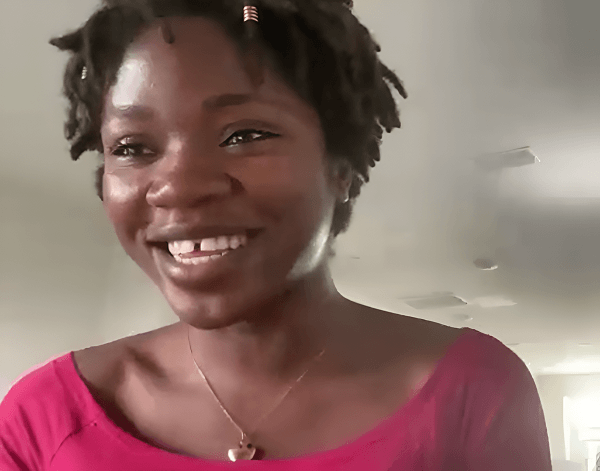
Kemi has a great love for tango, to the point that she practices it two or three times a week for entertainment and physical activity.
Initially, Kemi enjoyed dancing salsa because it reminded her so much of the music of her homeland and Yoruba culture, but after some health complications on her hips, she had to opt for something slower and calmer. That’s when she started to try tango and ended up liking it very much.
After the pandemic, she found that there was a dance academy near he rhome, which motivated her to dance tango to the point where these lessons have become a very important part of her life. She also sees dancing as a way to connect with others and be on the same page.
Read also: Patrón Latin Rhythms manager talks about the band and its plans
North America / USA
The moment´s revelation of Tropical Music brings a theme that will vibrate the deepest emotions
Para ser ubicado en: South – South Atlantic – Florida- Miami
Robby Ruíz is the newest EQS Music´s young artist, and “In My Feelings” is his first song and marks his debut as a Bachata revelation singer. This single is an original cover track by Canadian singer, Drake. The theme of this song is about relationships and how the the main character of the story finds himself in a power struggle with his feelings. “In My Feelings” from Robby Ruíz is an amazing Bachata Remix.
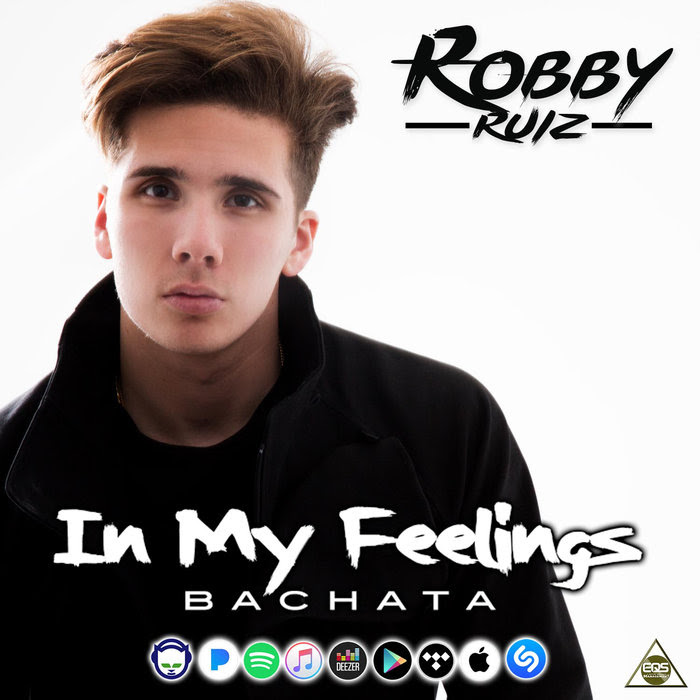
Release Date: July 20th, 2018
Video: https://www.youtube.com/watch?v=py6x_Pa7HCY
An Authentic Work of Art to Collect
To be located in: NORTHEAST – MIDDLE ATLANTIC – NEW YORK
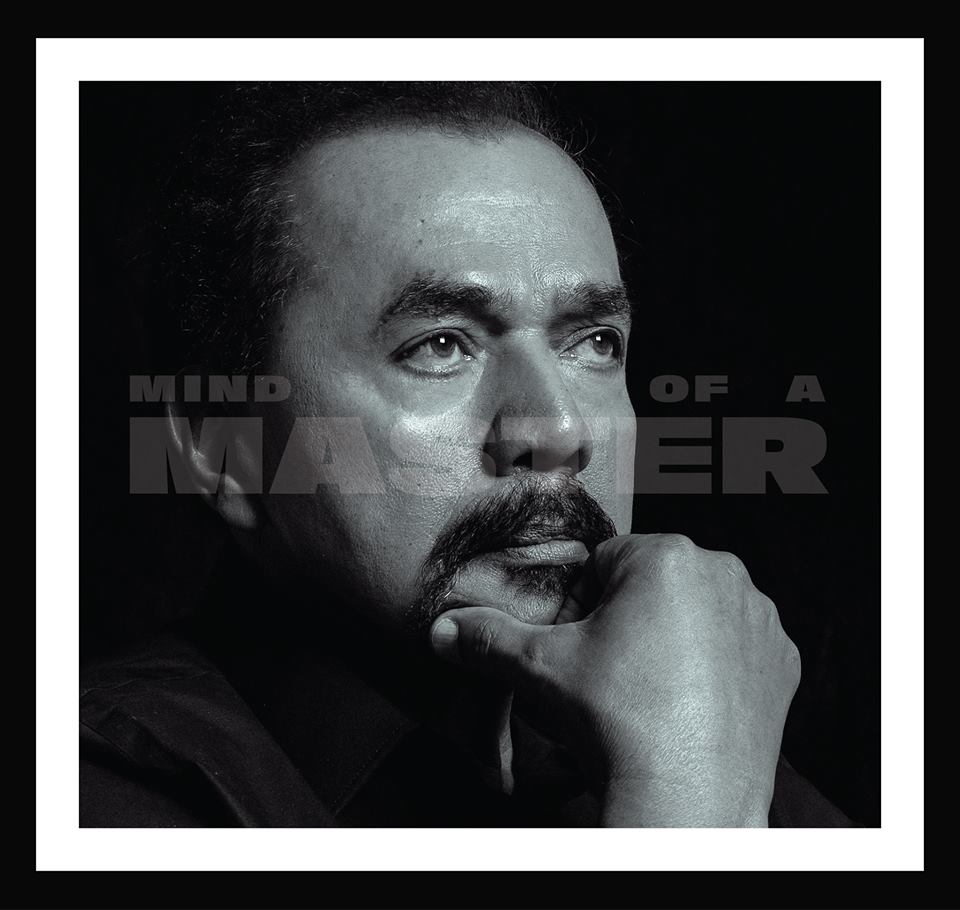
The new Latin Jazz Album “Mind of a Master” by Bobby Valentin & The LJ’s is the current sensation of the Latin musical Market containing important collaborations of international renowned figures in 11 tracks. Since its release this recording has marked a precedent with hundreds of unloads in four months by the world fans that support it and you will be able also to be part of that, by downloading “MIND OF A MASTER” in all digital platforms!!!
Release Date: April 14th, 2018
| Credits: | |||
| Bobby Valentin | Arrangements & Bass | ||
| Eliut Cintron | Trombone | ||
| Angie Machado | Trumpet | ||
| Ángel Luis Torres | Alto – Sax | ||
| Eduardo Zayas | Piano | ||
| David Marcano | Battery | ||
| Javier Oquendo | Congas | ||
| Special Guests: | |||
| Iván renta | Tenor – Saxo | ||
| José Nelson Ramírez | Hammond Organ | ||
| Orlando Santiago | String Sets | ||
| Tracks: | |||
| 1. De Nuevo a la Carga | 7.El Cumbanchero | ||
| 2. Latin Gravy | 8.Mellow Funk | ||
| 3.Orocoa | 9. Endless Love | ||
| 4.Smooth Ride | 10.Freedom | ||
| 5.Blast Off | 11. God Bless the Child | ||
| 6. Coco Seco | |||
“Thanks to all the media and the public for the support they have given me in my new Latin Jazz CD, Mind of a Master”. Bobby Valentin
Roberto Valentin, better known as Bobby Valentin, was born on June 9th, 1941 in Orocovis – Puerto Rico. His father taught him to play the guitar at a young age. When he was 11 years old, he participated in a local talent contest with a trio that he had formed. He played the guitar and sang for the trio and they won the first place prize. In 1963, Valentin joined Tito Rodriguez and traveled twice with Tito’s orchestra to Venezuela. He also made musical arrangements for Tito and at times for Charlie Palmieri, Joe Quijano, Willie Rosario, and Ray Barretto.
Bobby was also the musical arranger for the Fania All Stars, and is featured in a live recording of the conglomerate’s song “Descarga Fania” (which he also wrote) playing a bass guitar solo. In 1975, He left Fania and founded his own record label “Bronco Records” and released the album “Va a la Carcel” Vol 1 and Vol 2, recorded “live” at “El Oso Blanco”, Puerto Rico’s oldest state penitentiary.
During the years Valentin has been featured in recordings (and occasional live performances) by Larry Harlow, Ismael Miranda, Roberto Roena, Cheo Feliciano and the always remembered, Celia Cruz.
For more information contact him through this social channel: https://www.facebook.com/Bobby-Valentin-660486604066057/ or visit him in his official webpage: http://broncorecordsinc.com/
Video: https://www.facebook.com/660486604066057/videos/1325583834222994/